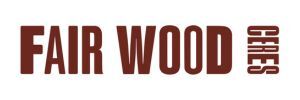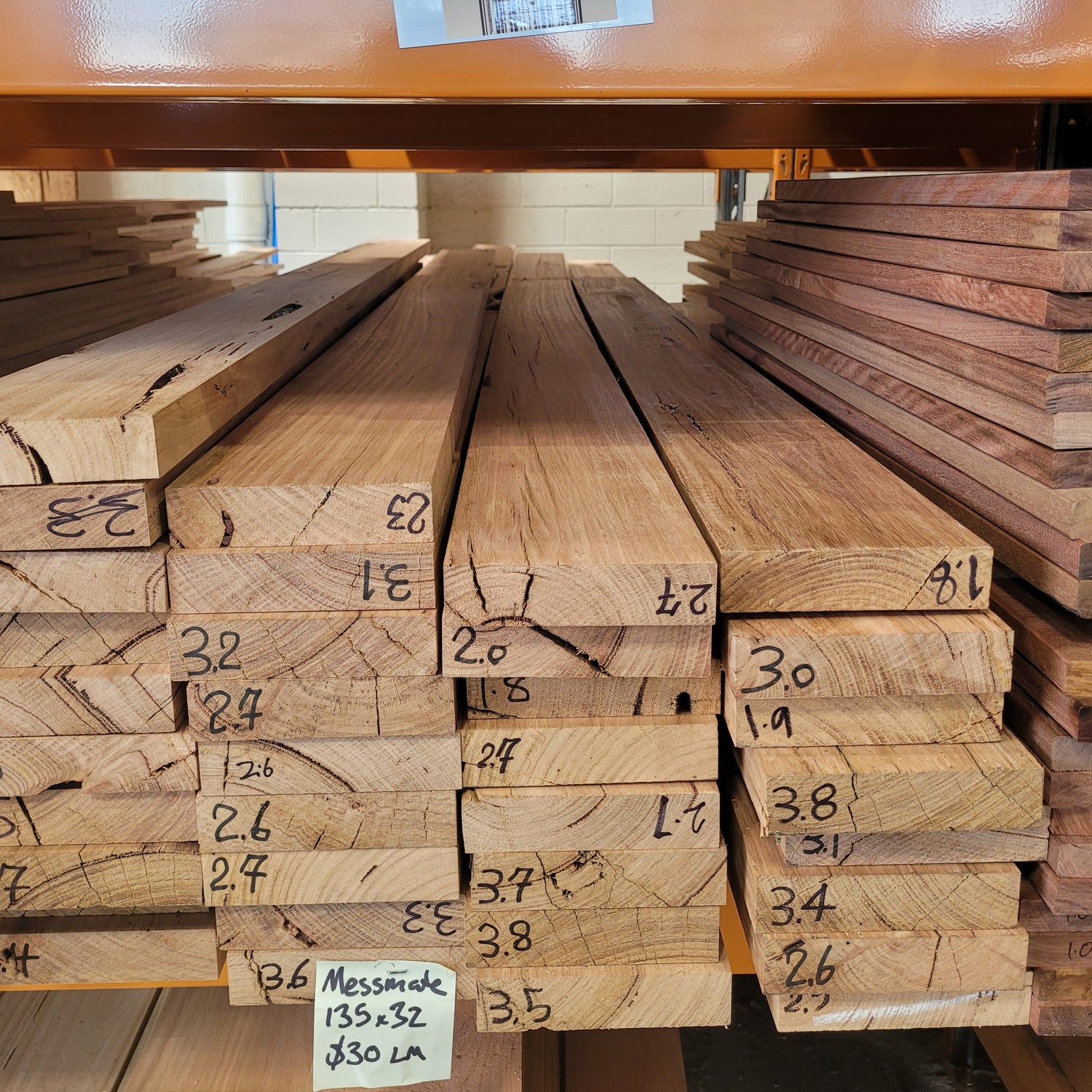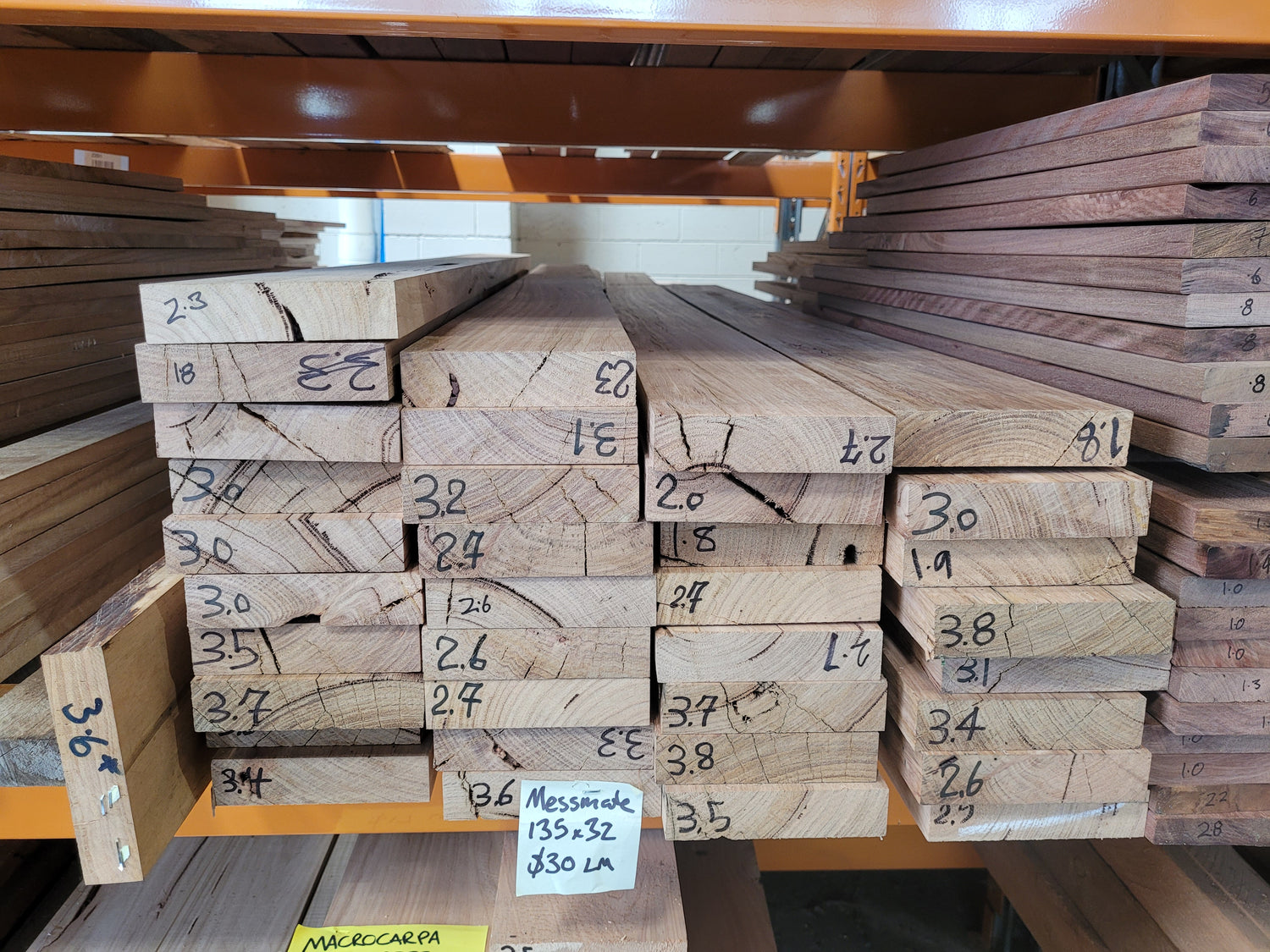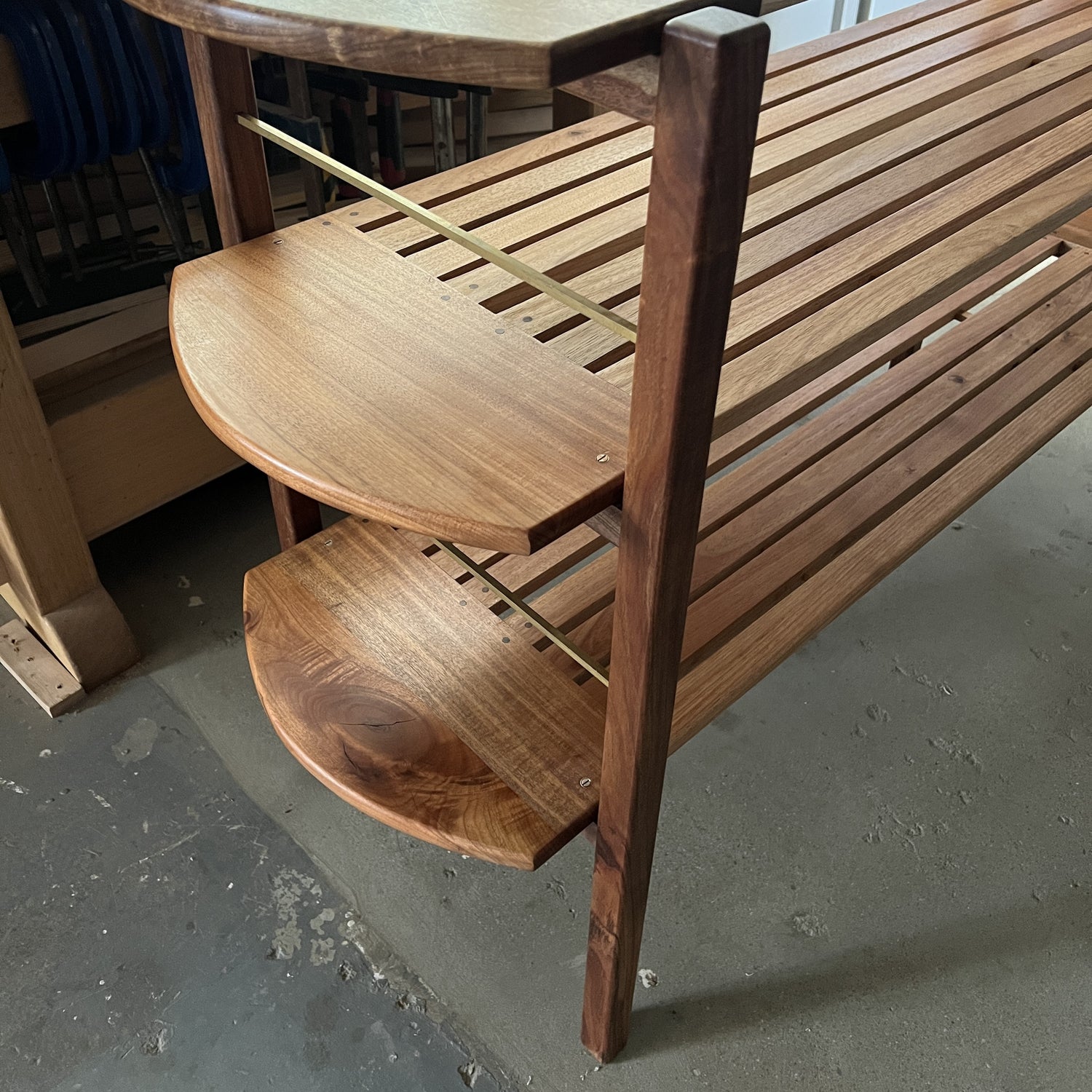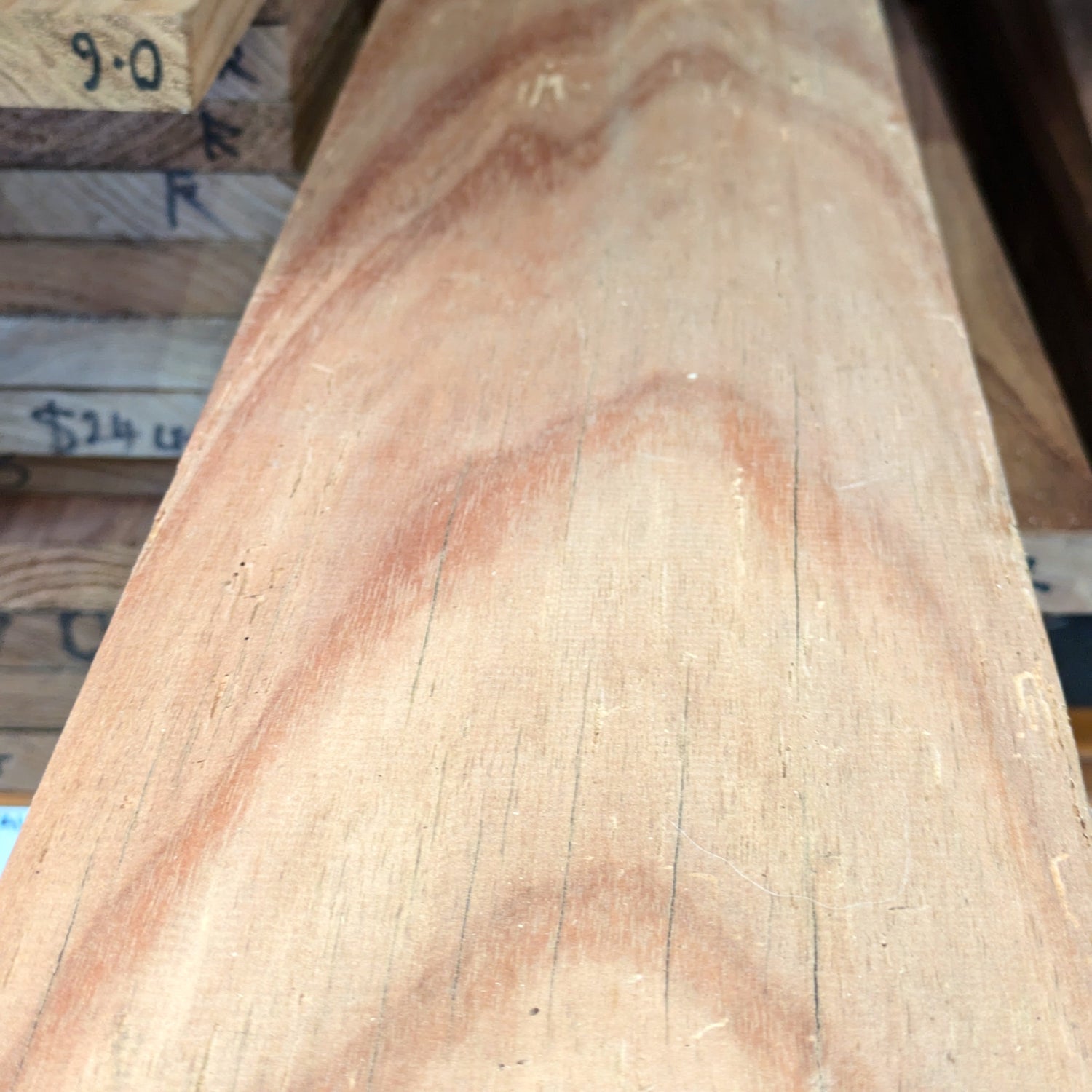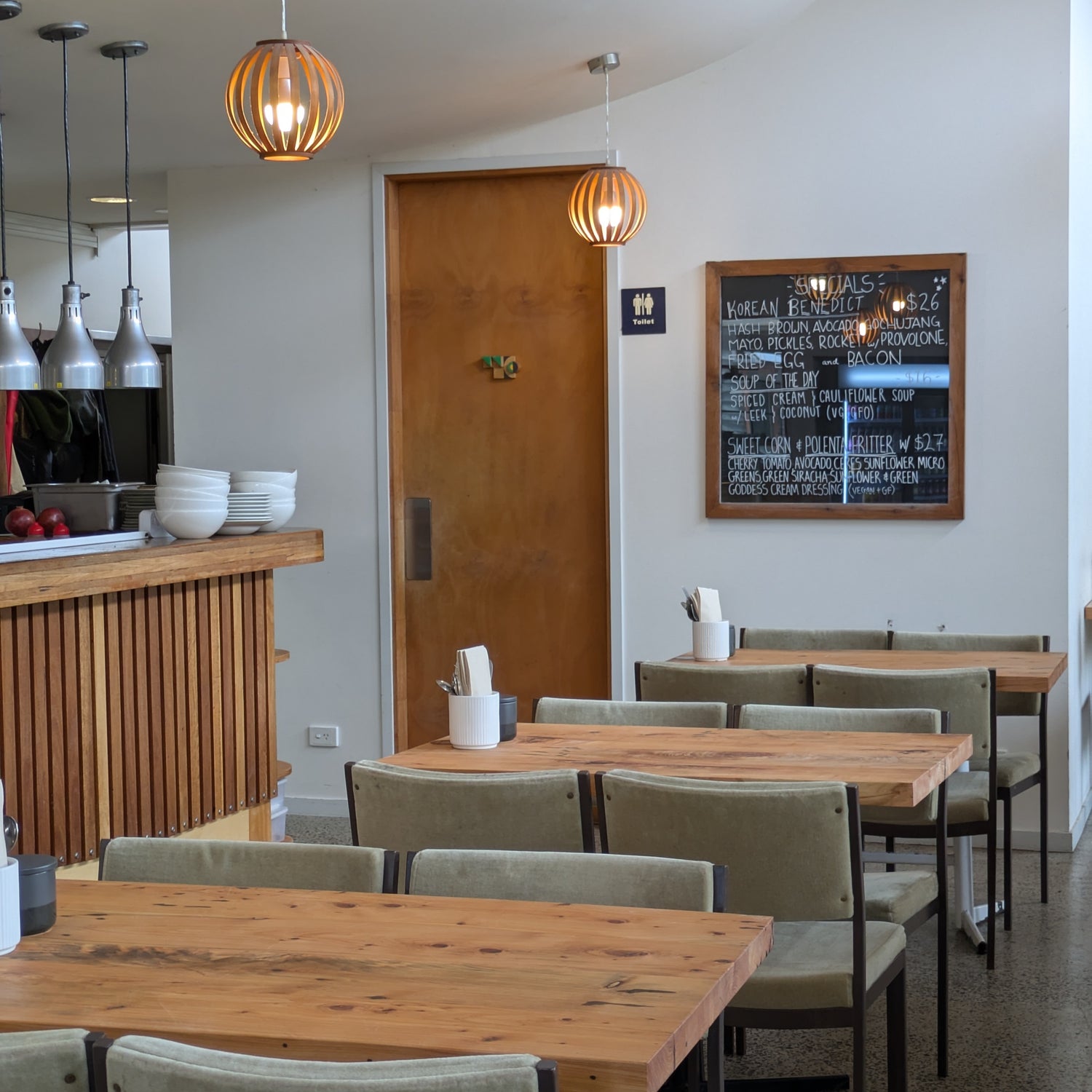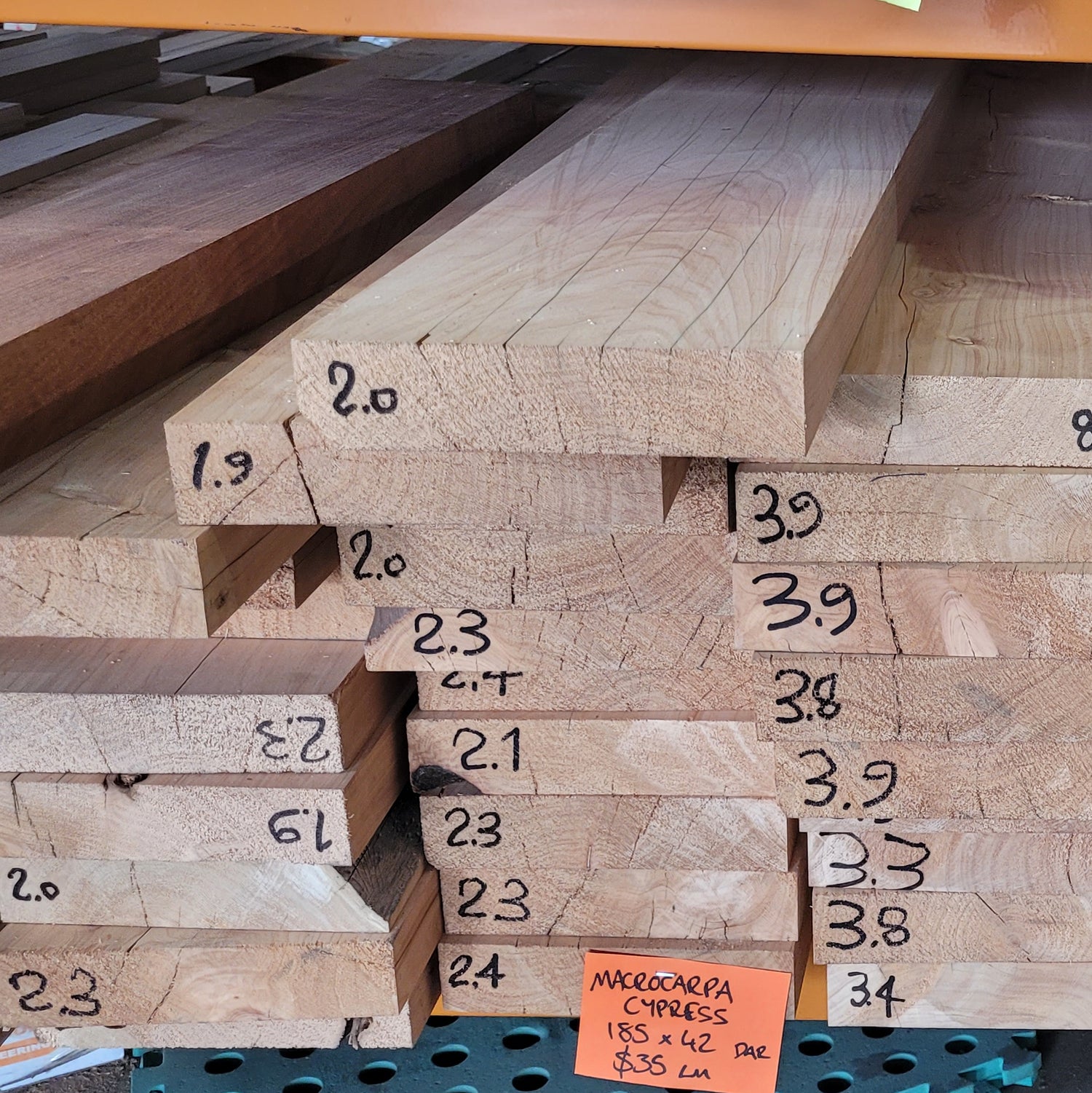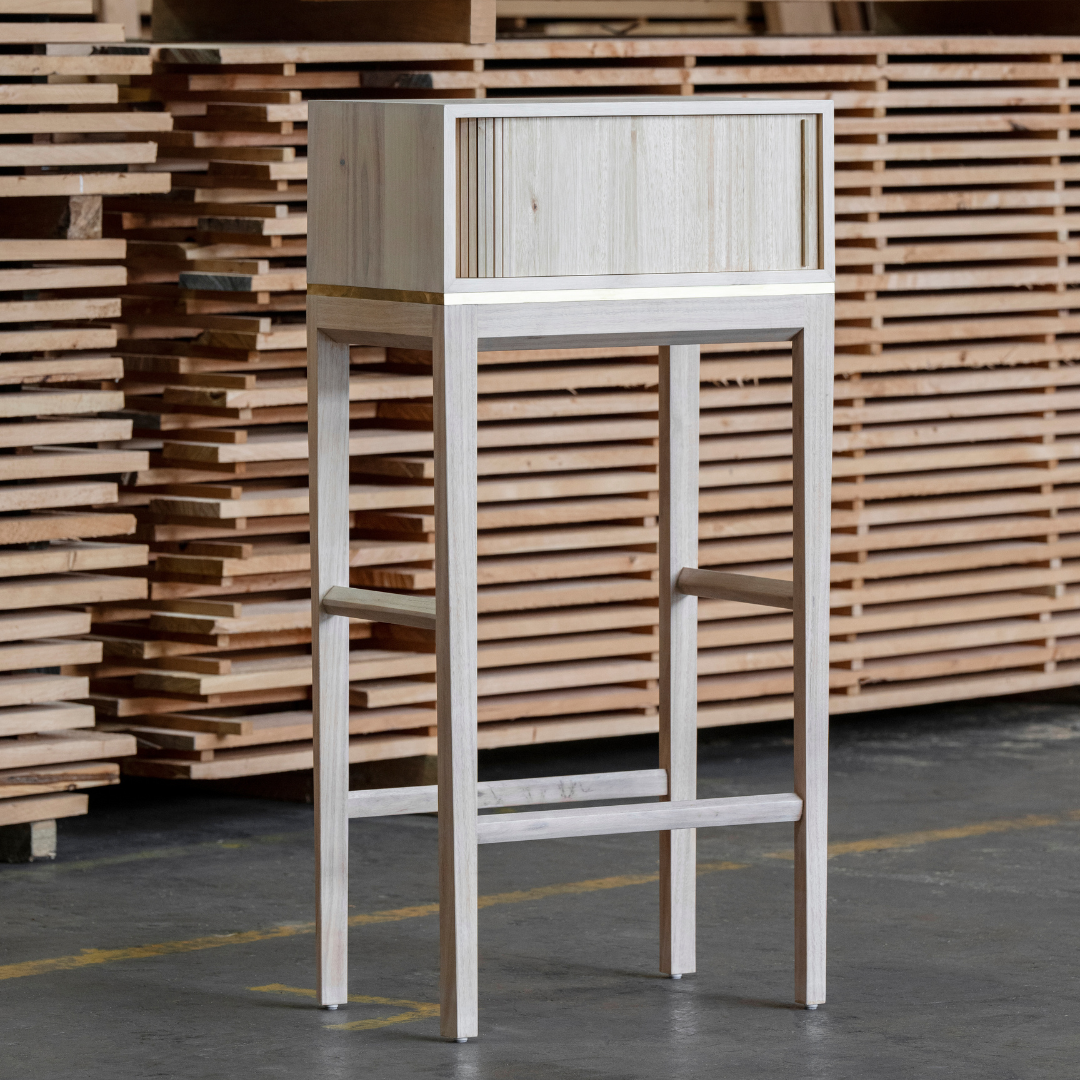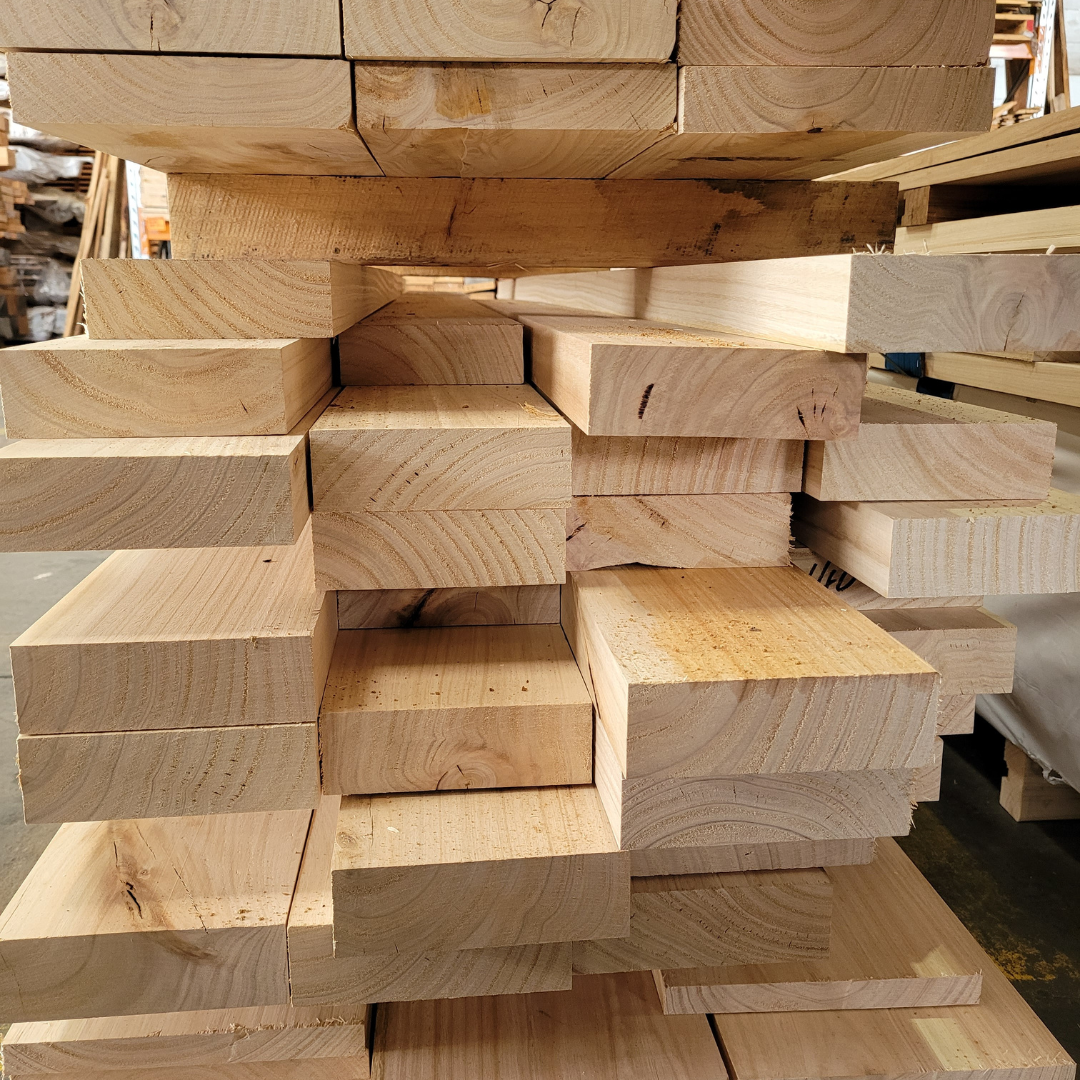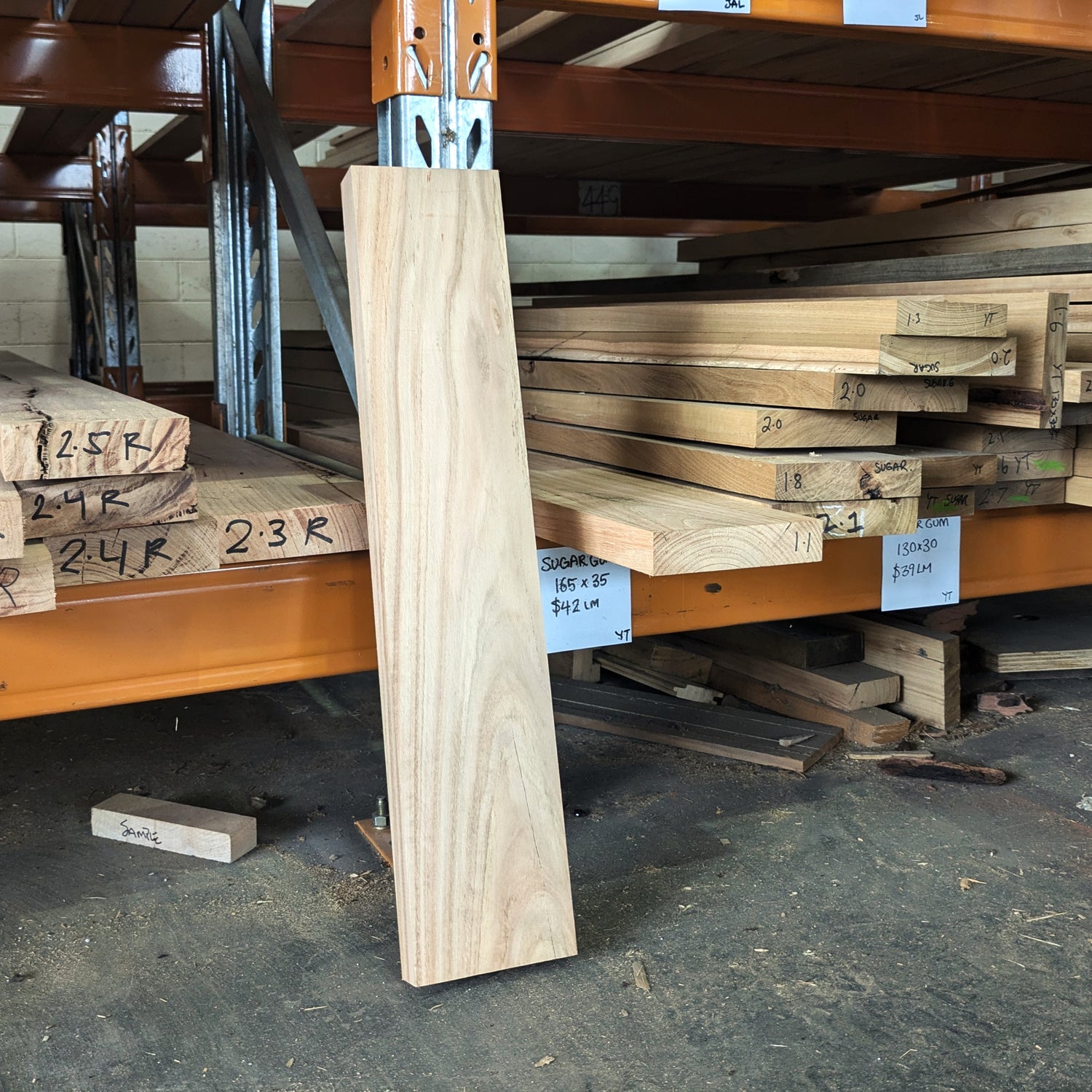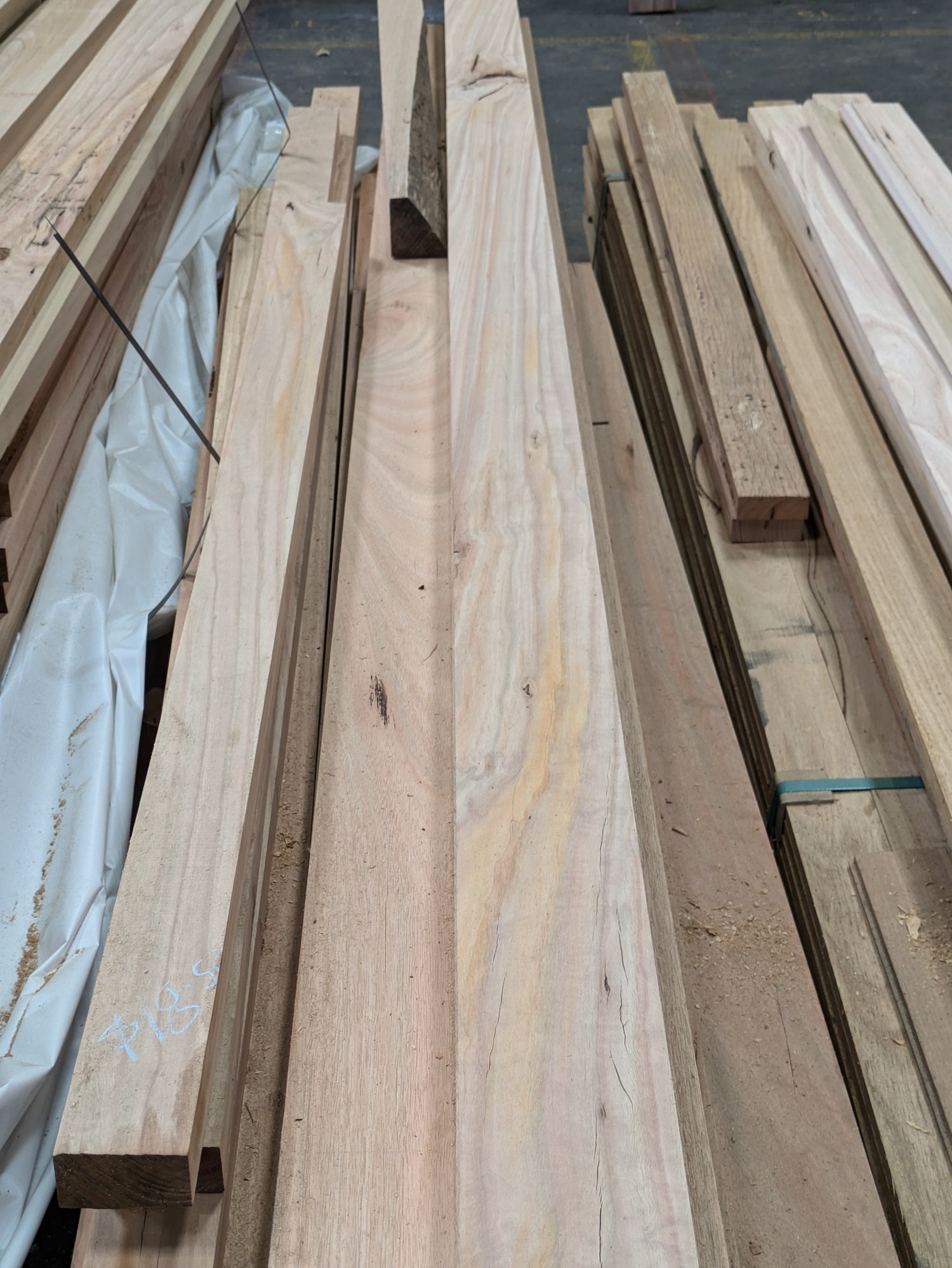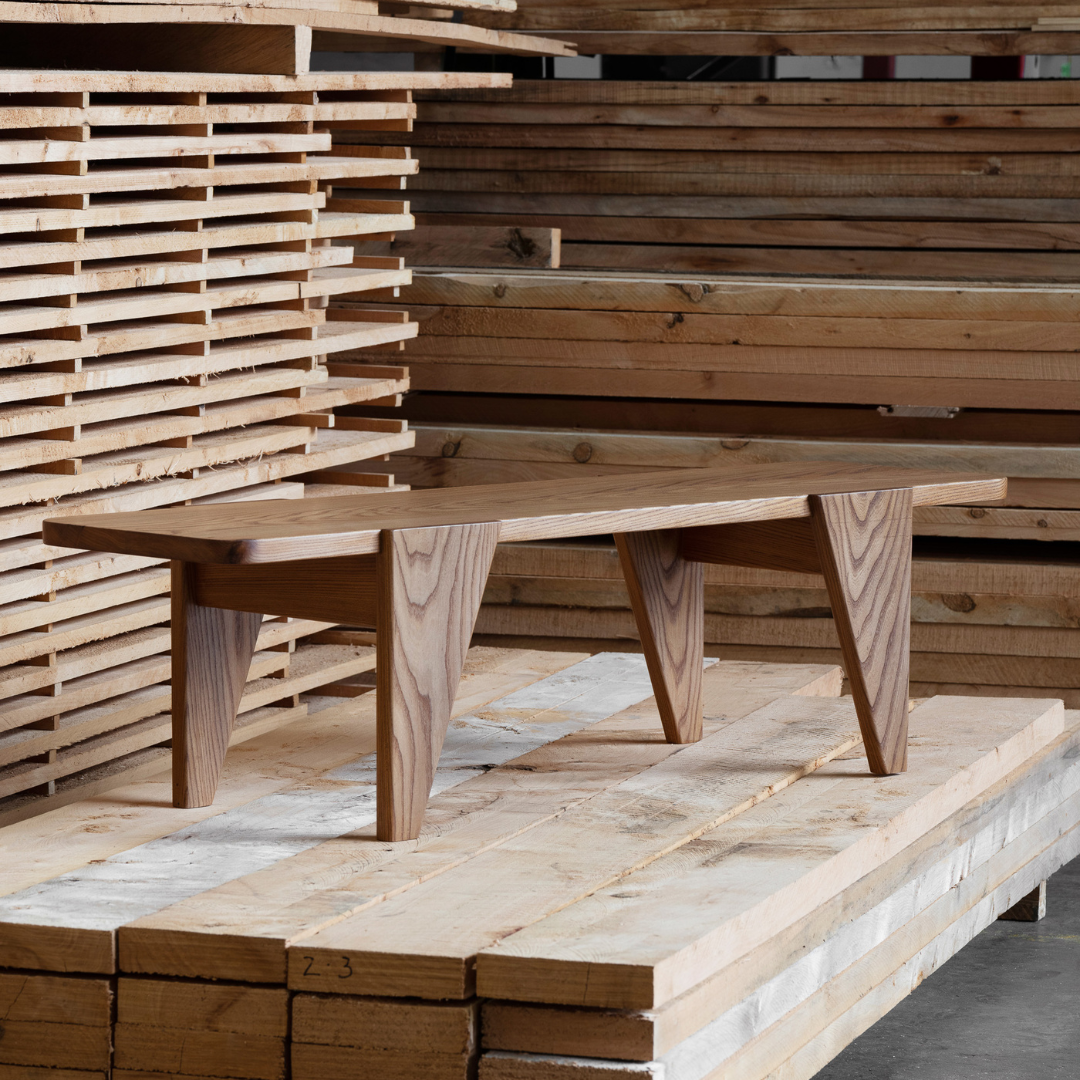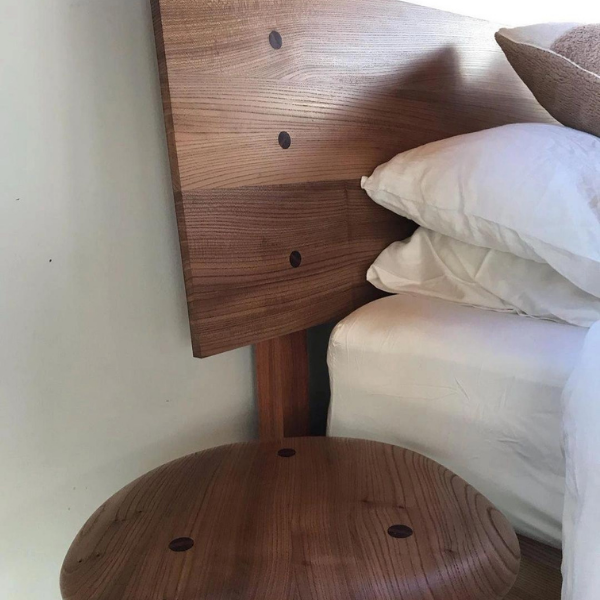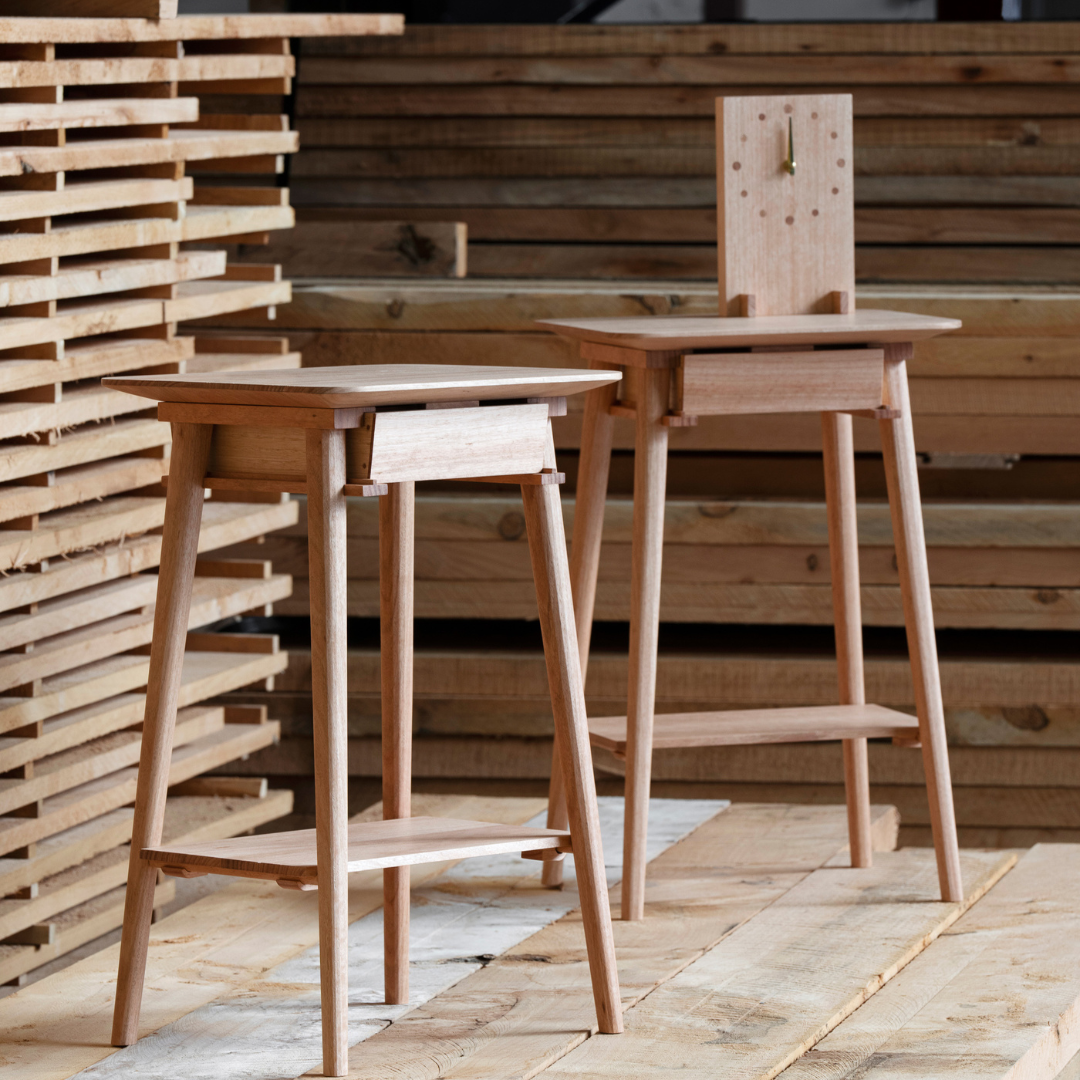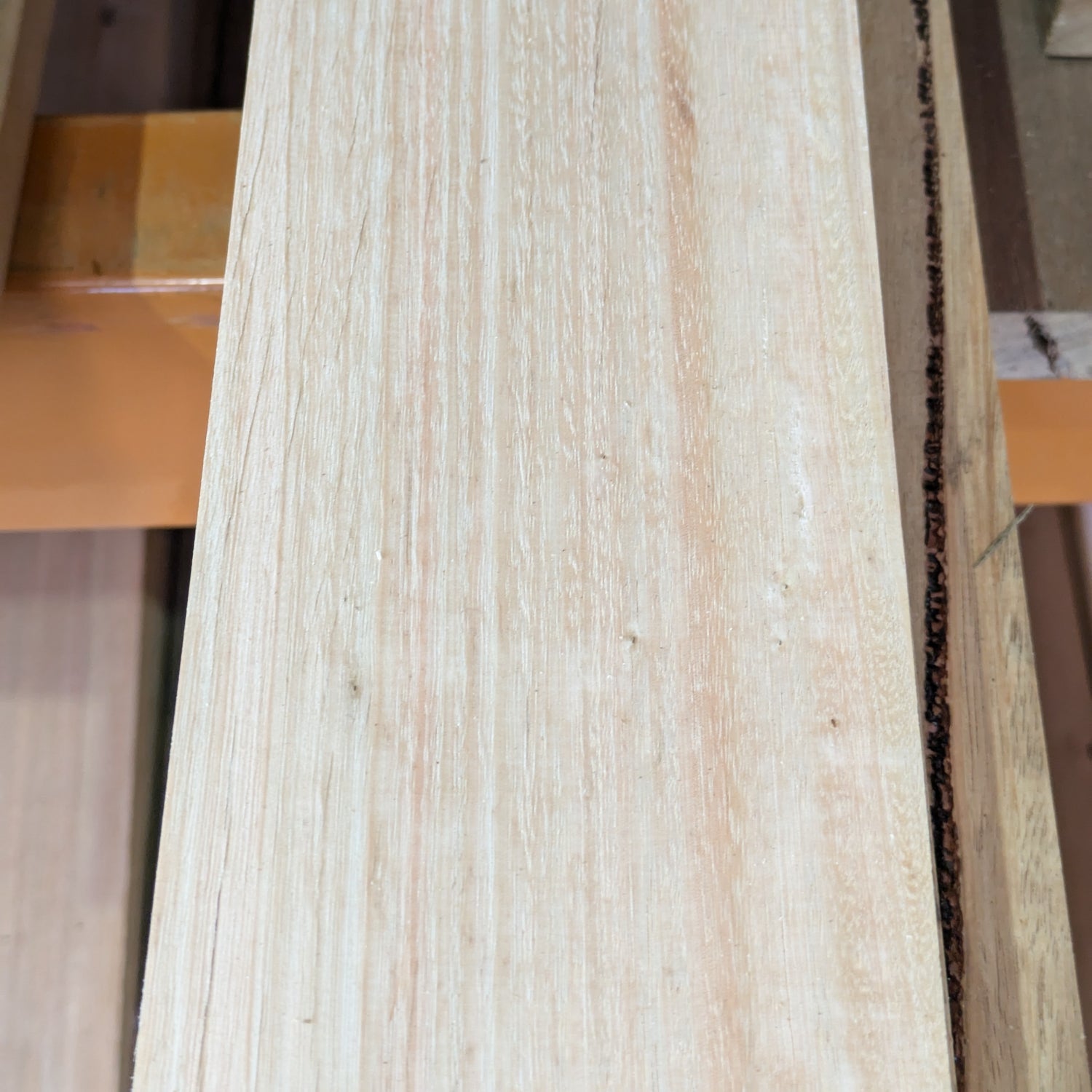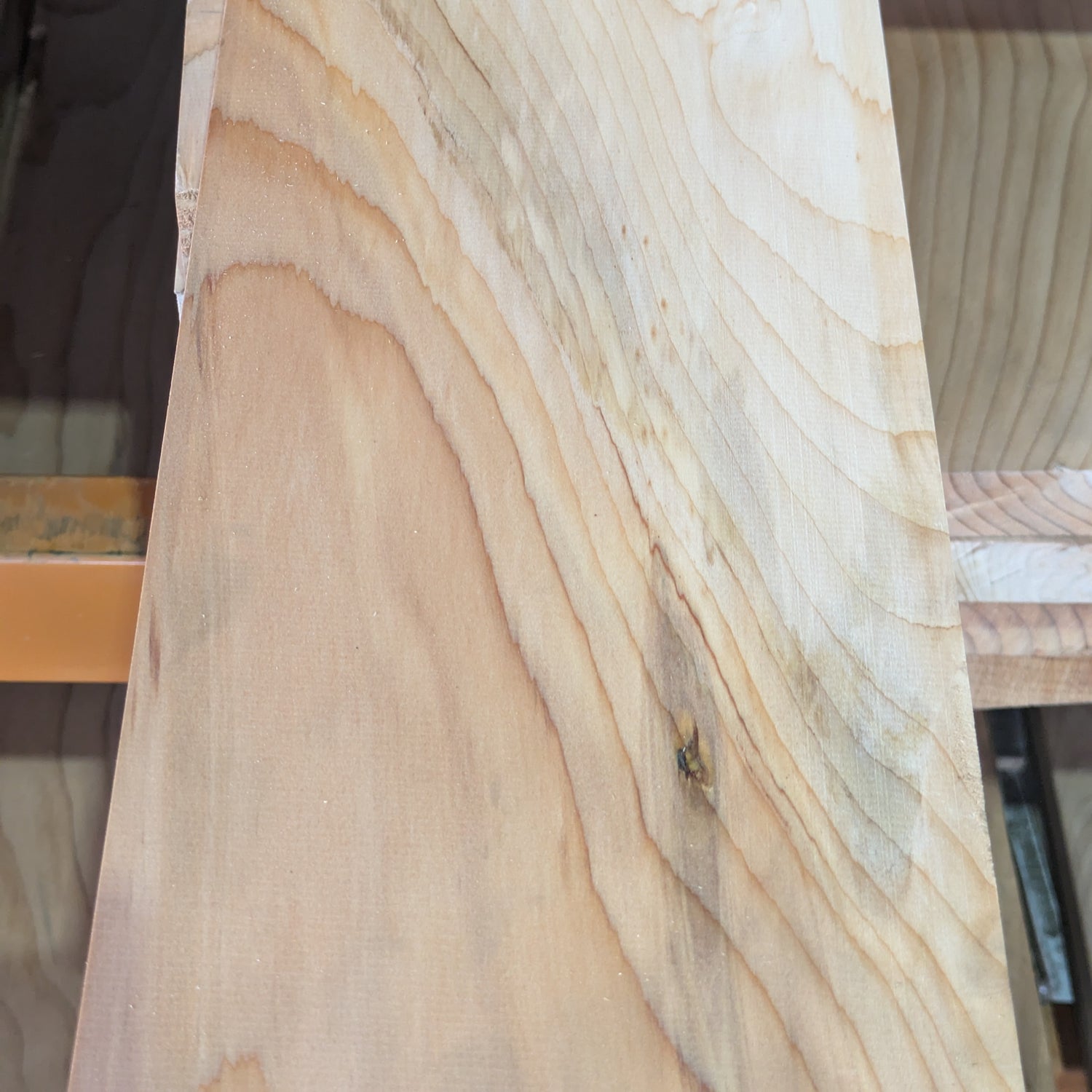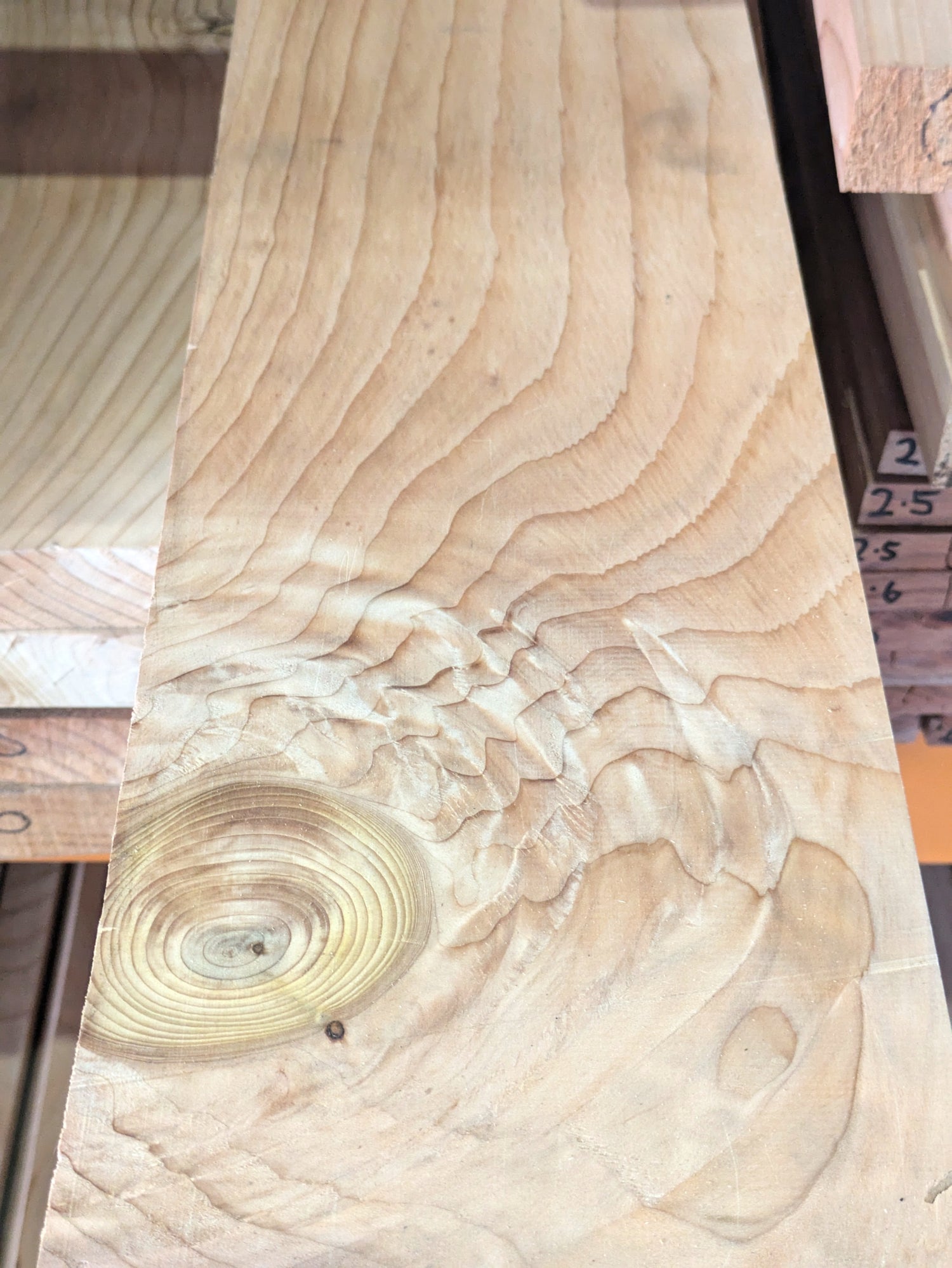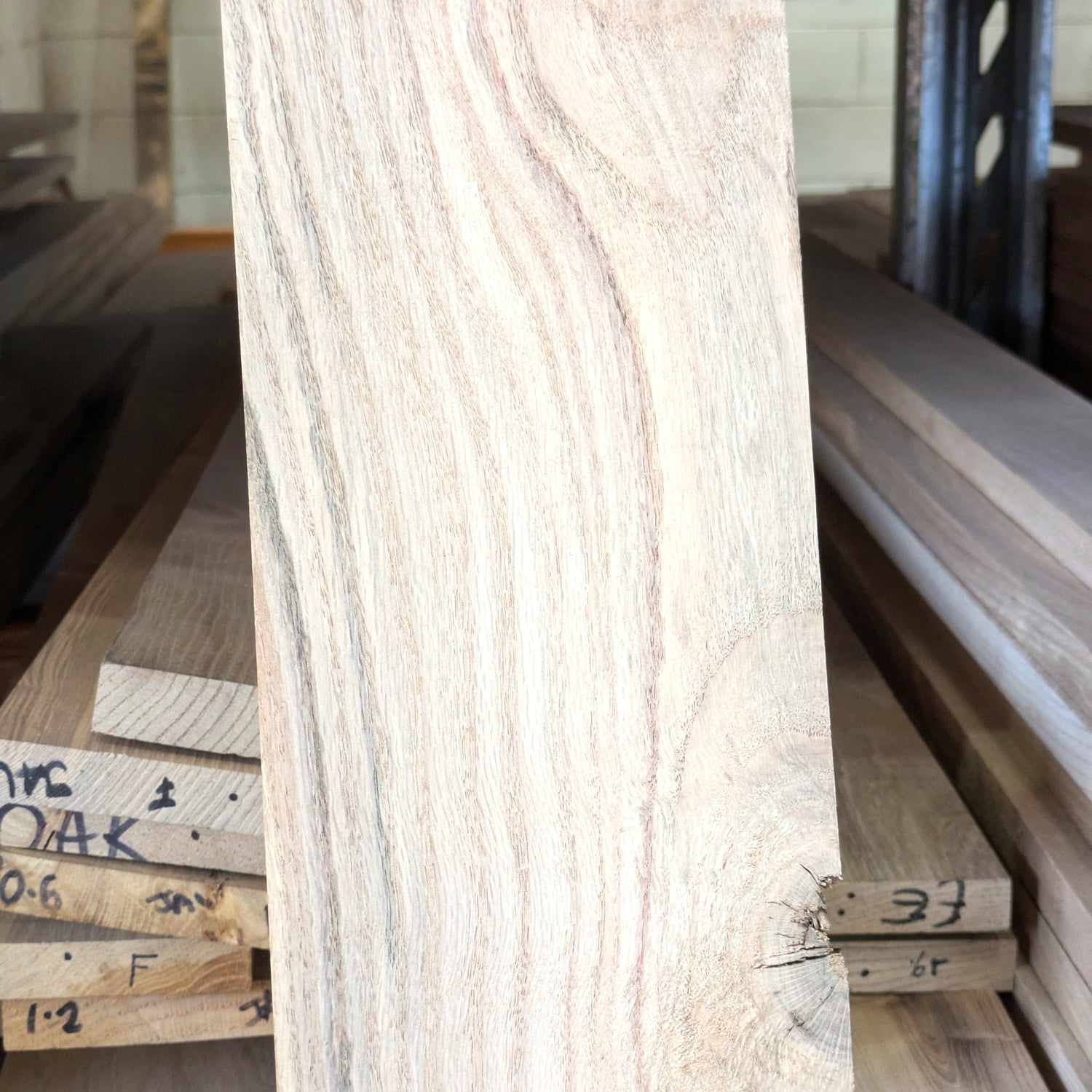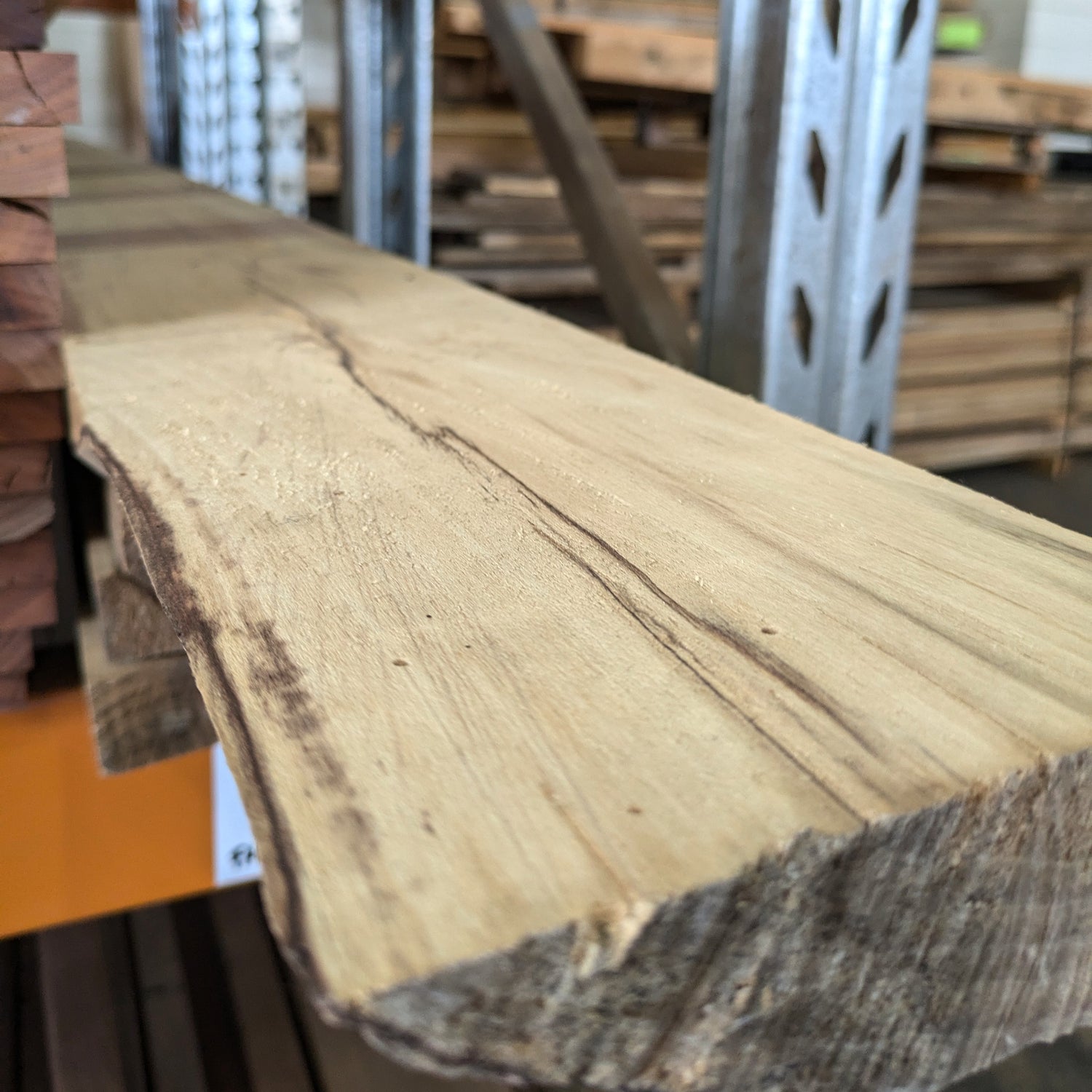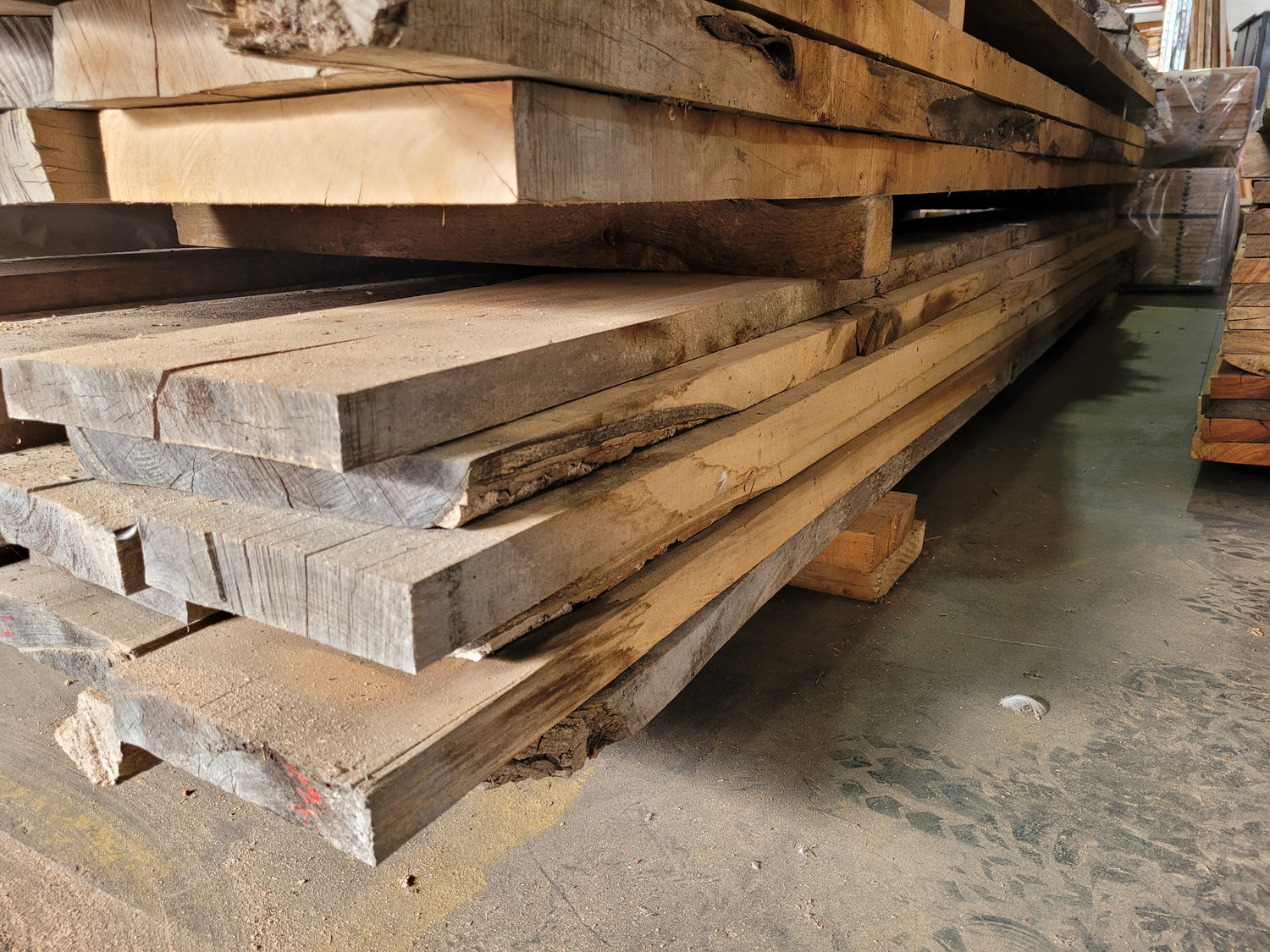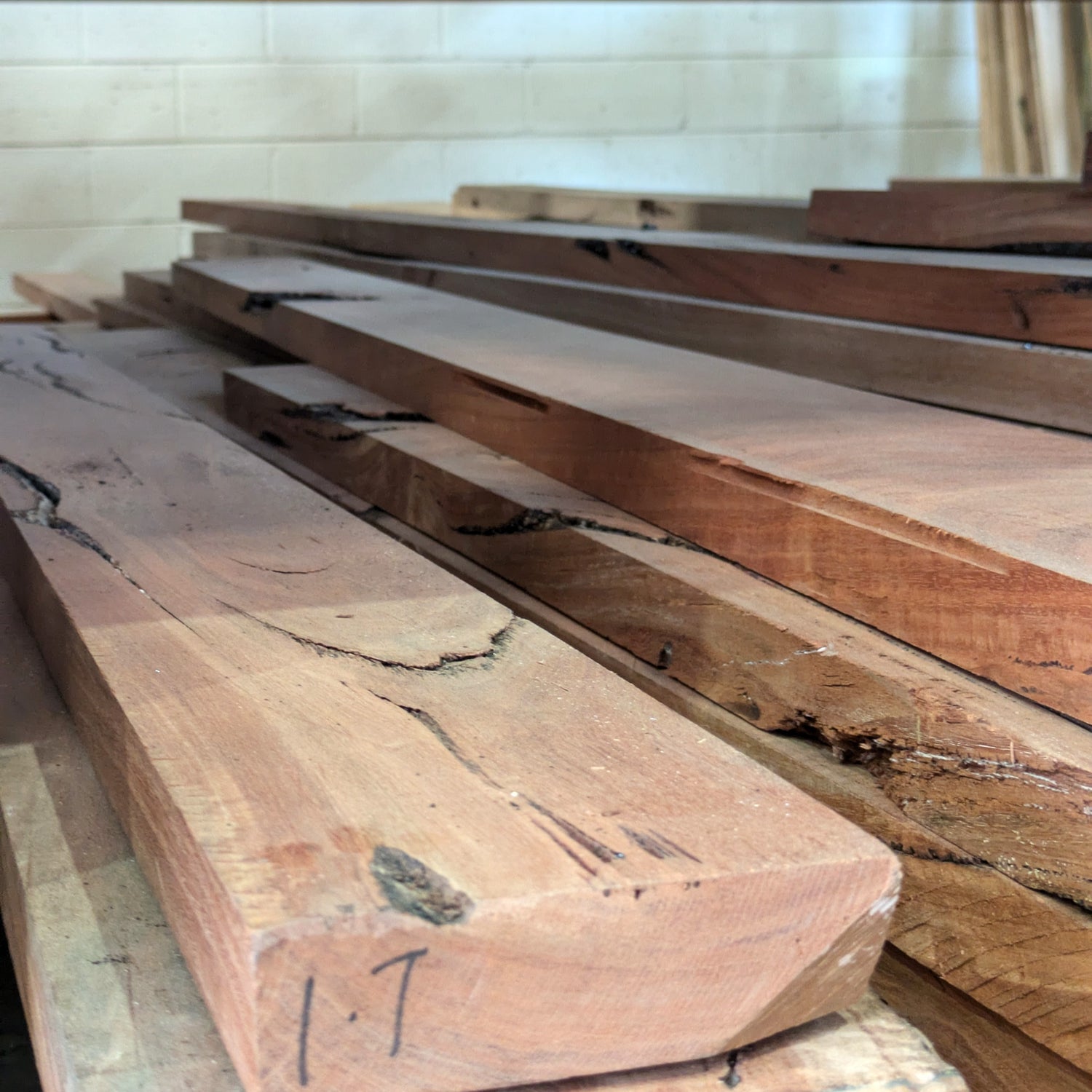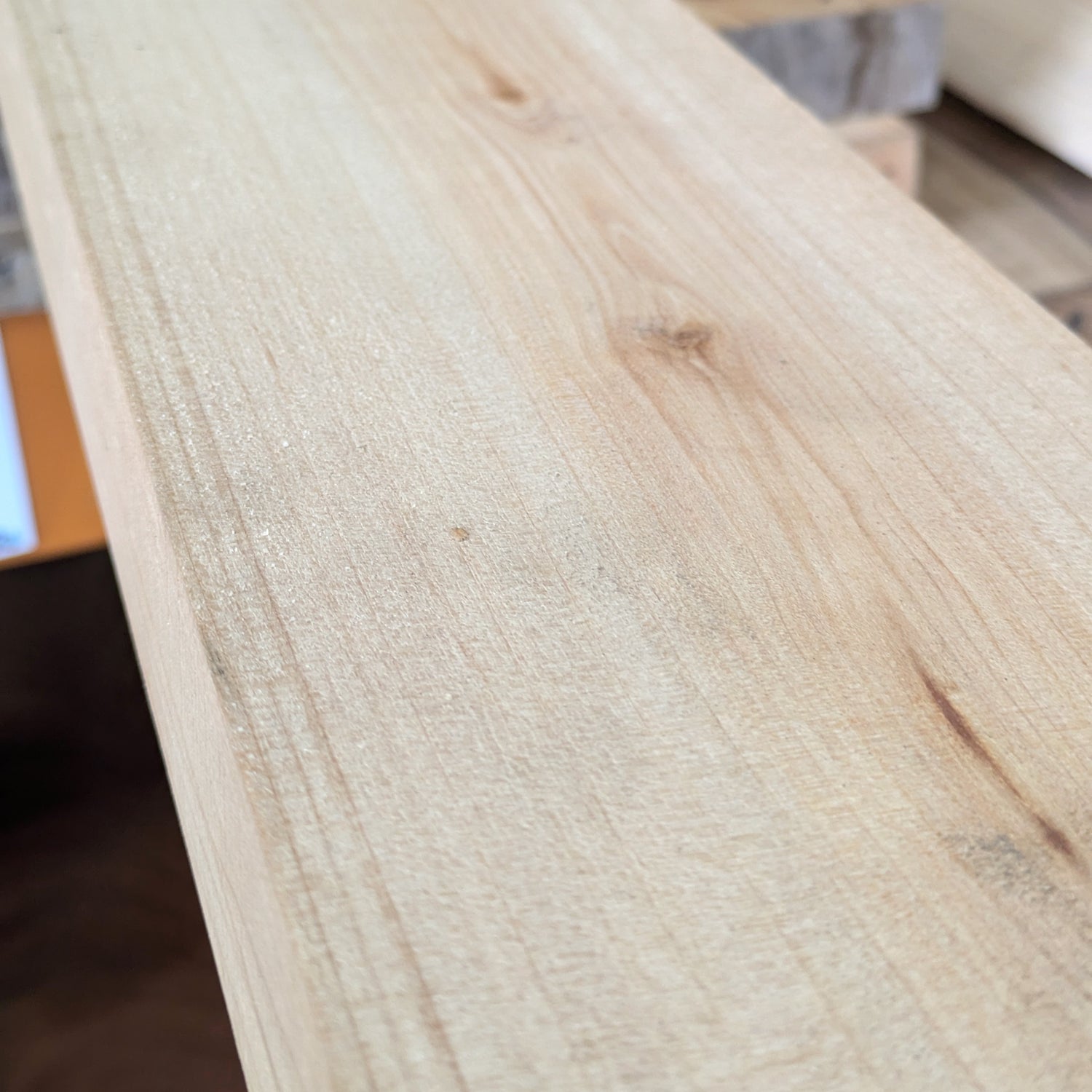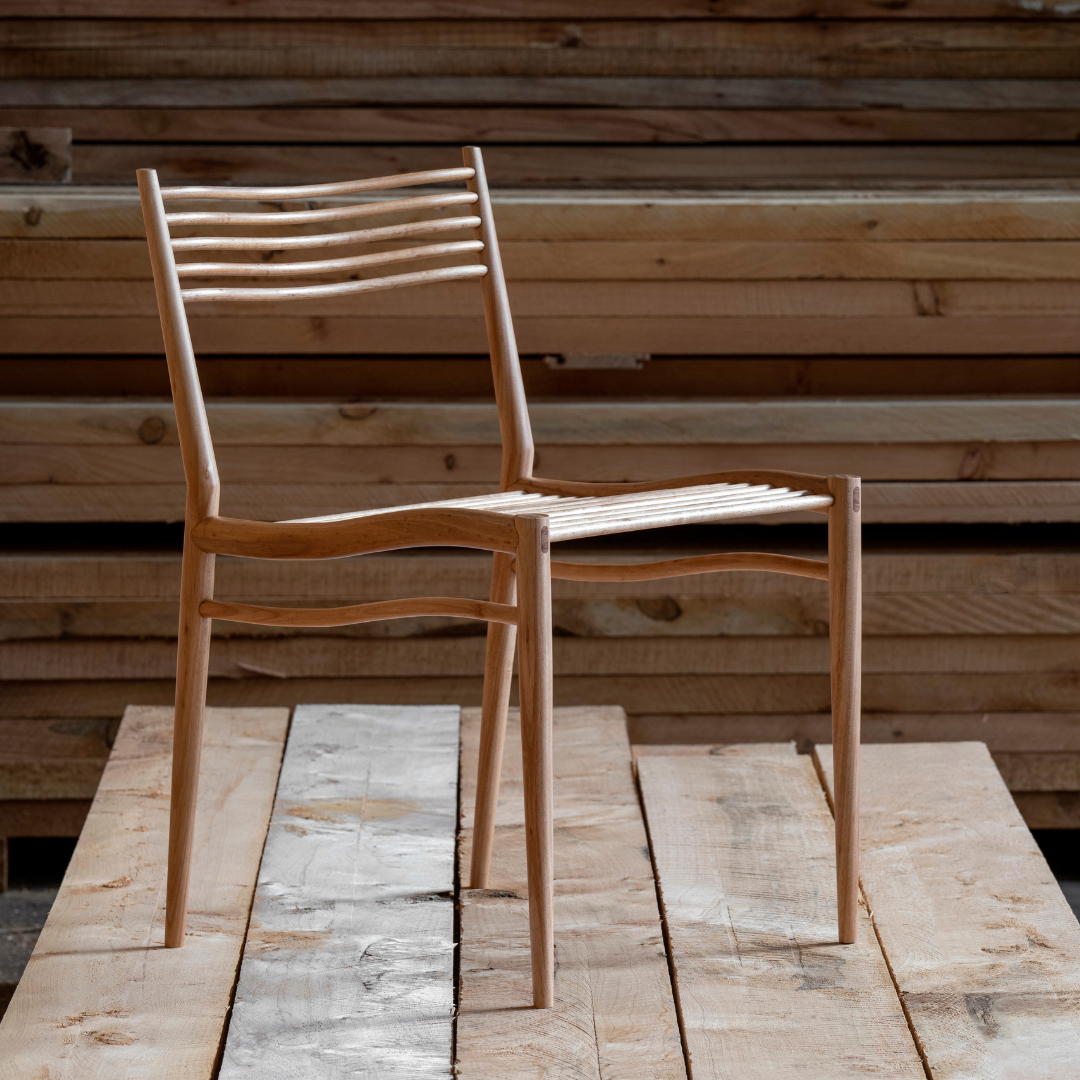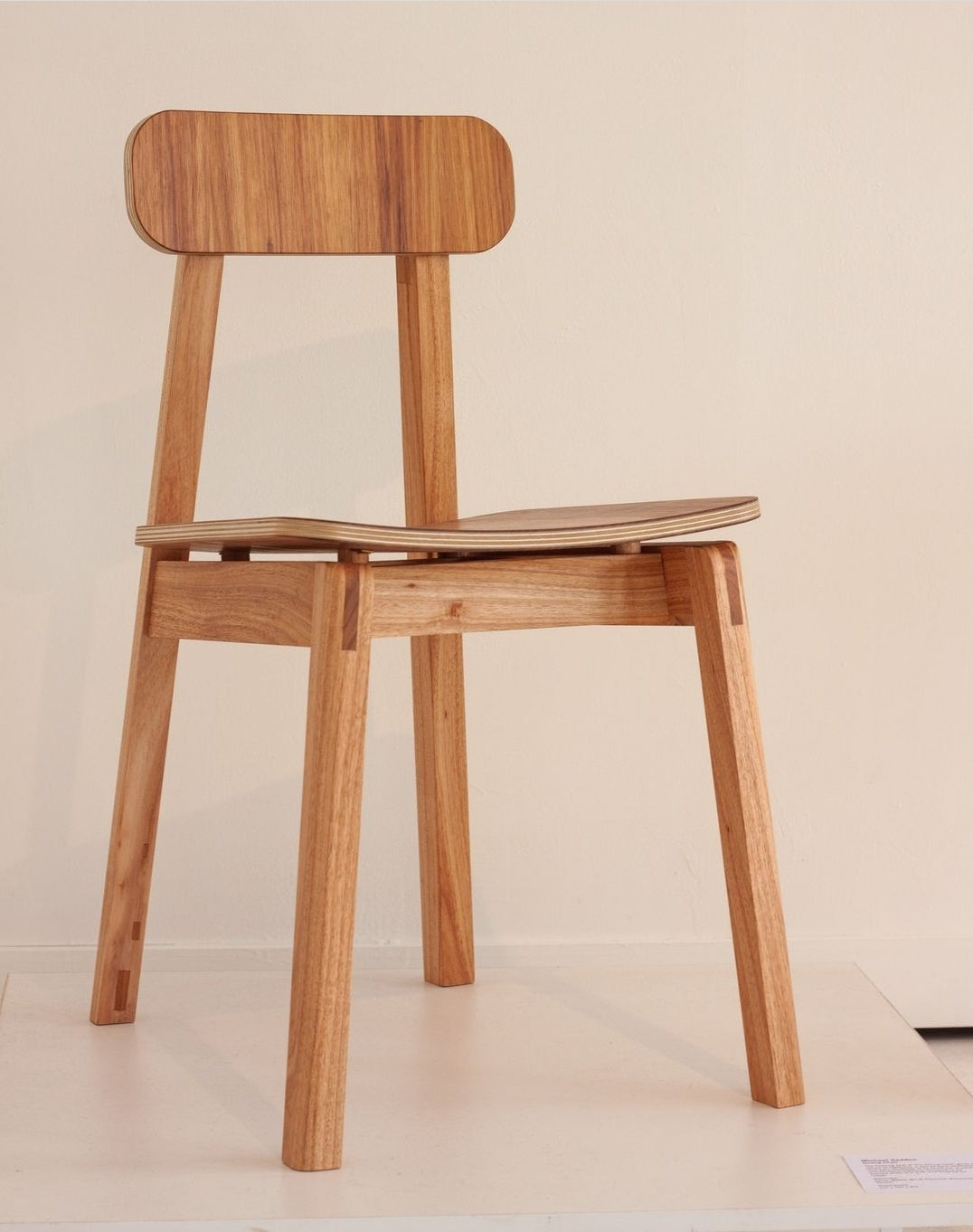Messmate, an Indigenous VIC hardwood, is highly sought after by many furniture makers. It is relatively easy to work with and is a pale wood with often high features throughout.
This Messmate is from our supplier John's property on Taugurung land.
John is a big proponent of what he has coined environmental woodlots. The idea is that although sometimes the intention is to harvest the timber, the woodlots provide multiple environmental benefits for as long as they are standing and managed, often decades. Tree farming can have many benefits, not least, the emergence of biodiversity and natural habitat where there was none before.
We have this beautiful timber in varying dimensions and in DAR and Sawn.
Get in touch to enquire.
Cypress Macrocarpa is popular among furniture designers due to its beauty and strength.
Macrocarpa Cypress is extremely stable, naturally termite resistant and reasonably durable. Starting as a straw colour, it will eventually fade to a grey over time.
Light weight and low density makes this timber particularly easy to work with.
We have multiple dimensions available in rough sawn and DAR, perfect for tabletops, shelving or other furniture projects.
Our salvaged Macrocarpa Cypress is sourced from farms around Victoria who plant this species as windbreakers because of its ability to grow quickly.
Fill out the form below to enquire.
Shining Gum is a versatile hardwood with a straight grain and pink-brown appearance, suitable for a range of applications.
We have various dimensions from 50x19 to 180x35, but this popular species sells out quickly, so get in touch below to check if we have what you're after.
Origin
This timber is the result of 30 years of good tree management on behalf of John and Di Lord.
Having bought heavily logged forestry and farmland in northern lutruwita / Tasmania, they have spent around 3 decades regenerating this patch.
John and Di planted the abandoned farm paddocks of their farm with this Shining Gum. These trees have been thinned and are now around 30 years old.
Elm has impressive strength and hardness, a great material for furniture and cabinetry subjected to high stress. It has an interlocked grain pattern and soft brown tone that blends seamlessly into any interior design style.
Dimensions
70 x 20 - $14 per lm
110 x 19 - $23.10 per lm
125 x 15 - $32 per lm
135 x 19 - $28.50 per lm
Manna Gum is also known as (River) White Gum or Ribbon Gum because of the ribbons of bark that fall and hang around the trunk of the tree. Manna Gums are iconic in the South Eastern parts of Australia and are a main source of food for koalas.
Manna Gum that we have is often from salvaged sources coming from unforeseen events like fires or high wind events. These trees are often salvaged from urban and peri-urban surrounds.
Dimensions
100x19 - $11.00
140x42 - $57.75
120x32 - $31.00
70x32 - $18.30
170x30 - $36.00
165x35 - $45.00
125x35 - $33.75
110x20 - $18.00
90x20 - $13.75
Please enquire to check if we have your size available.
We love English Oak for its impressive durability and natural resistance to decay, excellent for both indoor and outdoor furniture designs.
Dimensions
90x19 Select
110x19 Select
75x25 Select
100x25 Select
75x19 Feature
90x19 Feature
110x19 Feature
135x19 Feature
Get in touch below to ensure we have the dimensions you're looking for available.
Silver wattle
Moy-yan (Wurundjeri language group)
Popular among furniture makers because of its striking light brown, straight grain appearance. It's often used as a counterpart to Blackwood.
Easy to work with on machine and hand tools.
Dimensions
140x35 DAR - $24.80
150x25 - $21.50
Please fill in the form below to enquire.
FAQs
Timber joinery is a part of woodworking in which you join multiple pieces of timber together to create more complex items such as furniture, frames, shelves and more. Joinery involves cutting precise shapes and notches to fit into each other to make engineered structures from multiple pieces of timber.
There are endless possibilities of what to make when it comes to timber joinery.
You can build benches, seats, a birdhouse, a planter, a picnic table, a window planter, a garden arbour, patio chairs, a privacy screen and a bed frame...
Our customers have made a variety of impressive pieces. Check out our Instagrampage to get inspiration.
CERES Fair Wood offers locally-sourced quality timbers from sustainable sources, connecting small-scale growers and millers directly to timber buyers. We know where our timber comes from and often, its exact source and history. Following a strict timber selection criteria process is CERES Fair Wood's difference.
All of our profits return to CERES. CERES is an environmental education centre, community garden, urban farm and social enterprise hub spread across four locations, linked by the Merri and Darebin Creeks in Wurundjeri Country, Melbourne.
The difference between carpentry and joinery is that carpentry involves building structures on-site whereas joinery, in the most traditional sense, means that joiners have joined timber in a workshop.
We offer timber for many needs including cladding, decking, batten screening, landscaping, fencing, veggie bed kits, flooring, lining and firewood.
Timber for indoor joinery should be of quality grade 2, to be considered strong enough for certain joinery uses in which the furniture will need to carry weight, all outdoor applications should be of quality grade 1. Joinery timber can have more knots and sap than other timber uses.
